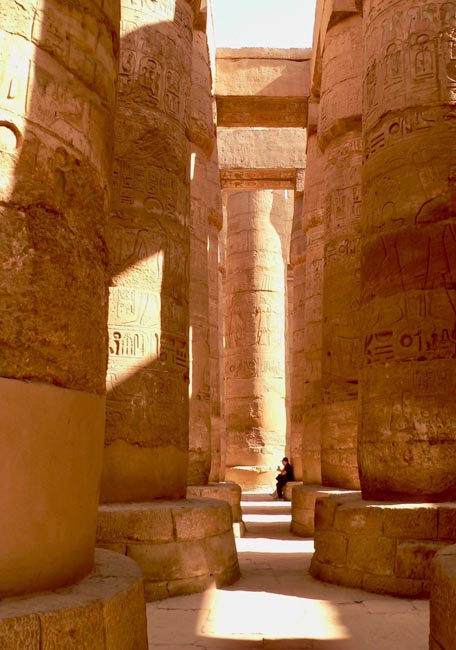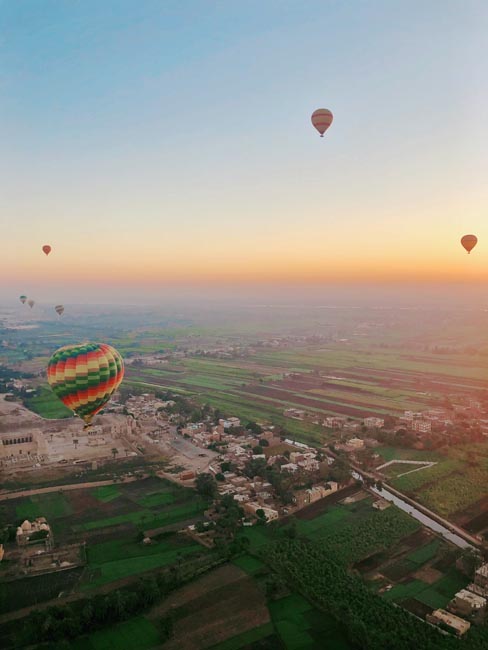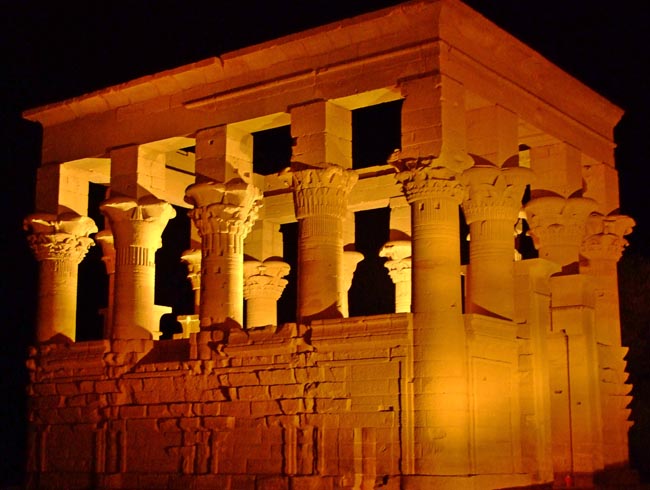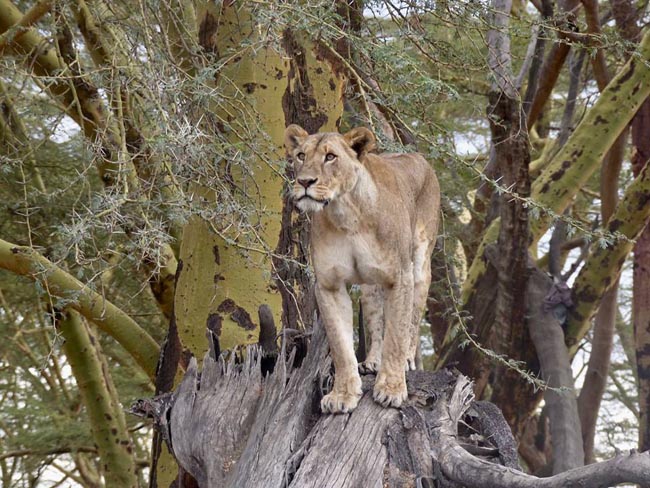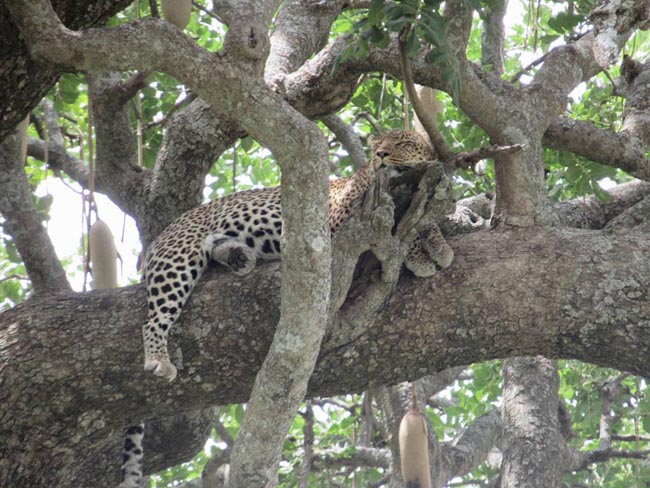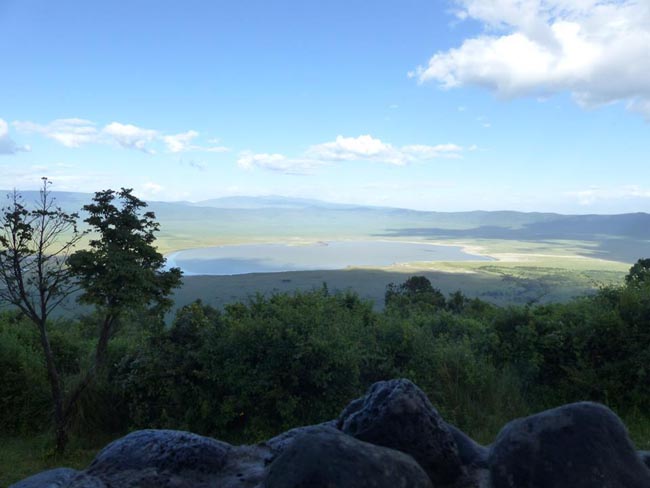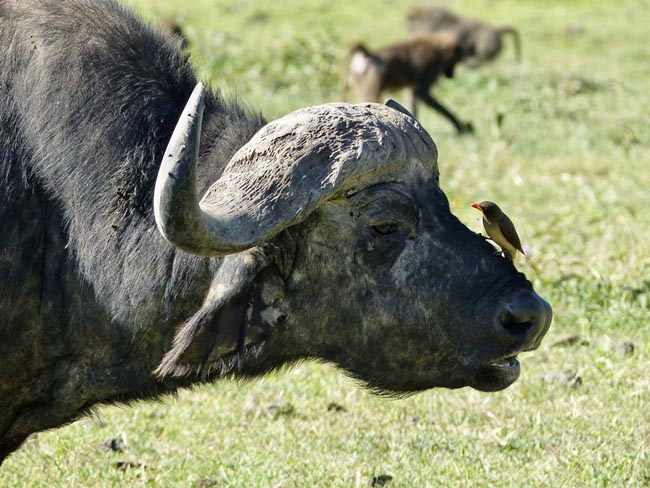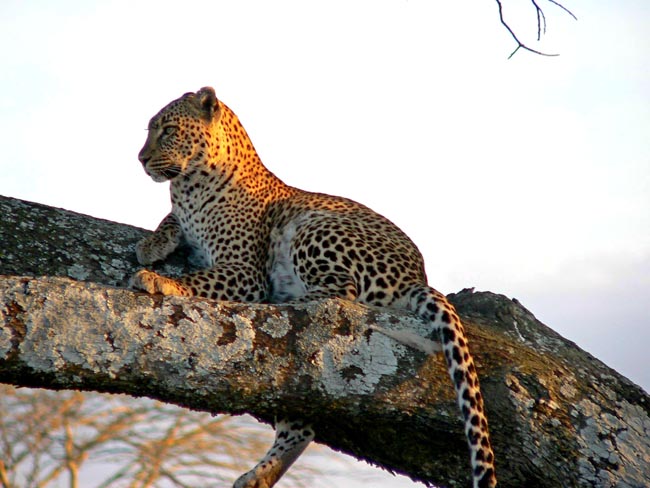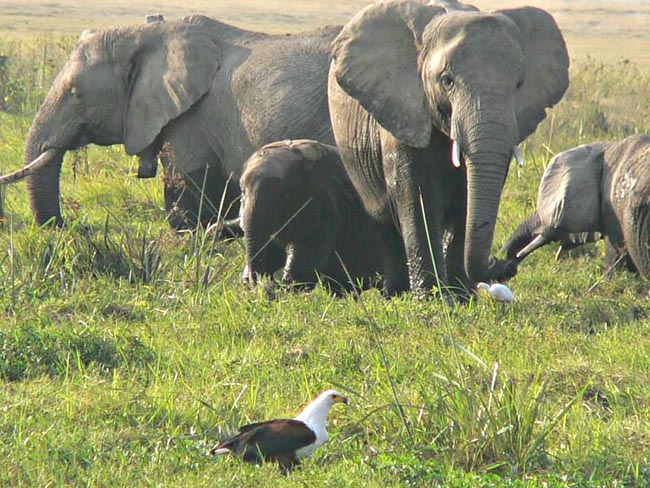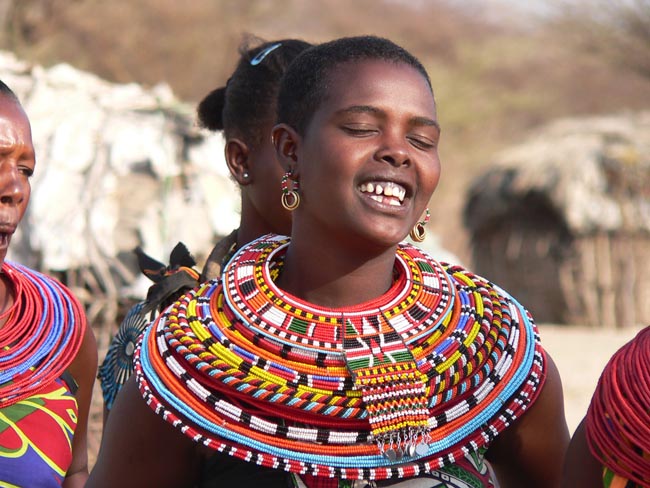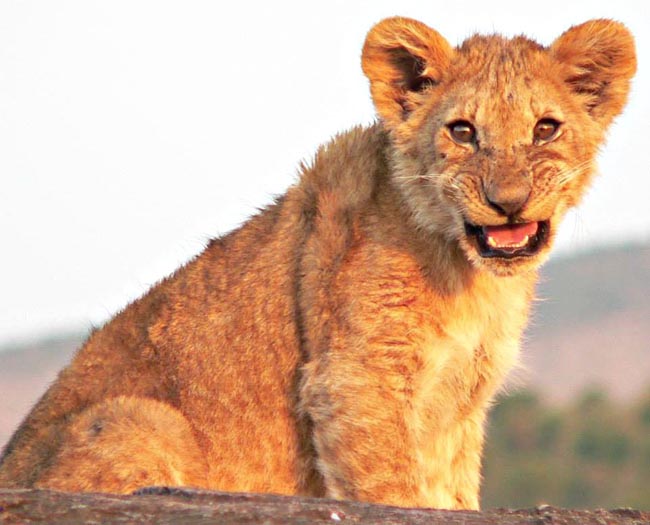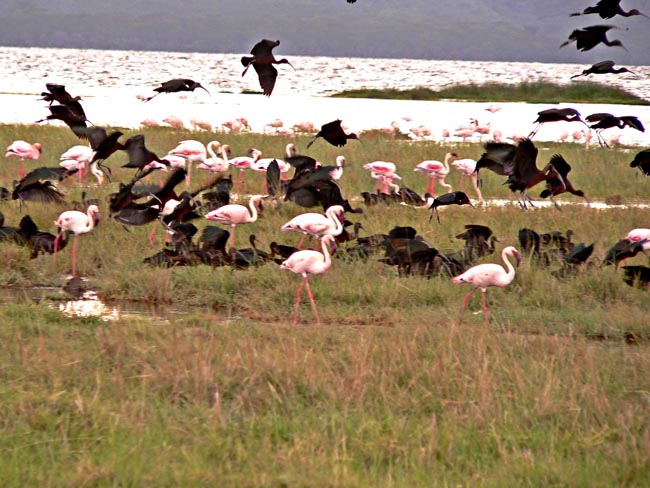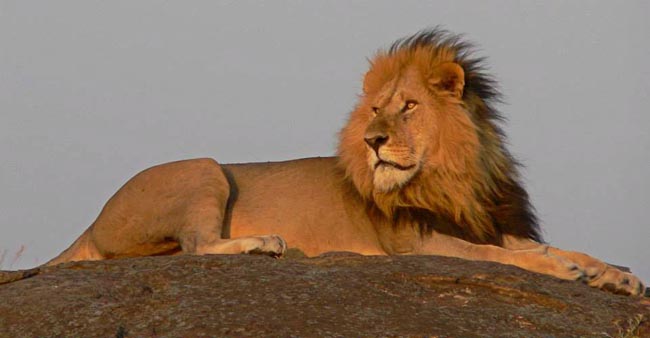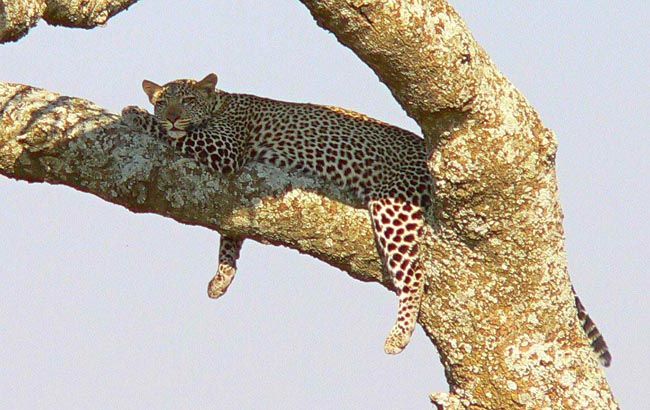Setting down in the bustling metropolis of Cairo, Egypt, we start this extraordinary 32-day Egypt, Kenya & Tanzania tour in magnificent style.
We see the Pharaonic monuments of the Great Pyramid and the Sphinx, which have since come to stand as symbols of Egypt's mystery and glory, walk cobblestone streets amid beautiful churches and buildings dating from the 11th century, embark upon horse-drawn carriage tours and enjoy donkey and camel rides.
Highlights of our 13-day odyssey through Egypt are our trip to the 1,500-year-old Karnak Temple, remarkable journeys through the valleys of the Kings and Queens and the longest river on the planet; the Nile.
As we fly into Kenya, it's not long before we discover why this special destination enjoys worldwide acclaim for its natural environment.
Gazing out over semi-desert savannah with the glistening glacier peak of the continent's second highest mountain - Mount Kenya - as a backdrop, we scan the endless plains in search of elephants, giraffes, cheetahs, leopards and lions, all the while marvelling at a pristine wilderness yet untouched by Man.
En route to the foothills of the towering Mount Kenya, we have the chance to see crocodiles, zebra, and ostriches, and we also have the opportunity to spend some time with local inhabitants dressed in traditional garb in tribal villages.
We see volcanic phenomena at the Great Rift Valley, watch out for the 'Big Five' in Masai Mara National Reserve, taste a variety of exotic local delicacies in the Carnivore Restaurant (with vegetarian options available) and make our way to the border of Tanzania amid glorious sceneries of rolling grasslands and African plains.
Continuing our tour of some of the best safari destinations in Africa and, indeed, on the planet, we visit Amboseli National Park at the foot of Mount Kilimanjaro, Ngorongoro Conservation Area, which boasts teeming wildlife as well as an incredible UNESCO-protected crater, and the epitome of all safari destinations at Serengeti National Park, wherein is to be found perhaps the largest concentration of wildlife in the world.
Interspersing admiration of its natural world with exploration of the country's man-made environment, we take in archaeological sites, colonial towns and the many historic sites of the 'spice islands' of Zanzibar.
Prices below are per person, twin-sharing costs in US Dollars (USD). Pricing does not include airfare to/from the tour and any applicable taxes. For single supplement rates and taxes (if any), please refer to below Prices & Dates table. For general information on flights to/from the tour, click here.
Your Travel and Accommodation Arranged For You
Tips Included for Driver, Restaurant Staff, Local Guides
Authentic Local Experiences With Lots Of Inclusions.
Select a date below to reserve your spot:
The above prices are subject to an additional $53 for taxes/fees levied on flights that occur as part of the tour. The internal airfares ARE included (any exceptions are listed in red below), but we list the taxes separately on your invoice as they are beyond our control and can change at any time.
'Land only' customers (you are booking your own flights) are advised that the flight from Cairo to Nairobi is NOT included in the 'land' price above. We can quote/book this flight for you at the current rate. If you book your international air with us, we will include this sector in your overall air quote.
Optional Single Supplement: $2770 USD (number of singles limited).
This tour may require a mandatory single supplement charge of $2770 if you join our share program and we are unable to pair you.
Download Itinerary
Day 1 Arrive in Cairo
Today we arrive in Cairo.*
Al-Qahira, literally "The Vanquisher" or "The Conqueror", is the capital of Egypt (about to be replaced by the city of "New Cairo"). The combined populations of the five cities that make up the metropolitan area on the Nile are over 21,000,000, making it the largest urban area on the continent. Nicknamed "The City of a Thousand Minarets" for its preponderance of Islamic architecture, Cairo has long been a centre of the region's political and cultural life.
* PLEASE NOTE - As tomorrow will be an early start and a full day, you may want to arrive a day early should your arrival time be late at night. Extra nights at the same hotel can be quoted/booked by your tour consultants once your flight schedule is known.
Overnight in Cairo.
Included Meal(s): Dinner
Day 2 Cairo: Great Pyramids & the Sphinx - Grand Egyptian Museum
This morning we kick off our comprehensive sightseeing program with some of the most iconic of Egyptian monuments: The Great Pyramids and the Sphinx.
Impressive in their grandeur, the pyramids are estimated to have been constructed over a period of 20 years using more than 100,000 labourers each year. The Great Pyramid of Cheops, constructed from over two million stone blocks, is 135m (443 feet) high! You may enter one of the pyramids through a long, narrow passageway and explore the deep inner chambers (OPTIONAL - extra fee applicable).
Later we visit the Sphinx. This feline-human was named by the Greeks because it resembled the mythical winged monster with a woman's head and lion's body. Legend has it that this "Sphinx" proposed a riddle to the Thebans and killed all who could not guess the correct answer! The Sphinx was carved from one solid piece of limestone.
We then continue to the Great Egyptian Museum (GEM), where we can break for lunch at your choice of one of several on-site restaurants/cafes.
After our break, our visit of the museum begins with a guided tour. The Grand Egyptian Museum is not only Egypt’s new crown jewel, but also be one of the largest, most modern, and most renowned museums in the entire world. The facility is host to more than 100,000 artefacts from many thousands of years of ancient Egyptian civilization and the comparatively more modern ancient Greek and Roman periods of Egyptian history.
During our visit we’ll also receive an explanation of one of the main themes that repeats throughout GEM -- “Kingship and Eternity” -- and witness how this is reflected in the monuments accessible to us on today’s visit, namely: The Hanging Obelisk, the Colossal Statue of King Ramesses II, the ten Statues of King Senusret I (distance view), the Grand Staircase (distance view), double statues of Ptolemaic King and Queen, the Victory Column of King Merenptah, the statue of the god Hapy, and the Statue of King Ramesses II.
Our visit will culminate with the ground-breaking "Tutankhamun - The Immersive Exhibition," which takes us on a mythical journey to the mesmerizing world of Ancient Egypt. Through state-of-the-art digital projections, you will have the unparalleled opportunity to step into the astonishing life of the legendary Golden King via an awe-inspiring audiovisual adventure that spans an astonishing 3,400 years of history.
After our visit we return to our hotel for dinner and overnight.
Overnight in Cairo (Giza).
Included Meal(s): Breakfast and Dinner
Not finding what you're looking for?
Our specialists can take away the stress and create a private custom tour tailored to your exact interests and budget.
Day 3 Cairo: Dahshur, Memphis & Saqqara
We have an early start for a full-day day of sightseeing. Our drive this morning takes us through the suburbs of Giza, past some small, colourful villages and plantations in the fertile Nile Valley.
We first travel to the stunning site of Dahshur, known chiefly for several pyramids, mainly Senefru's Bent Pyramid and the Red Pyramid, which are among the oldest, largest, and best-preserved in Egypt, built from 2613 to 2589 BC. These pyramids were an extremely important learning experience for the Egyptians as they provided knowledge and know-how to transition from step-sided pyramids to smooth-sided pyramids. Ultimately their breadth of experience would allow them to build the Great Pyramid of Giza.
We continue to Memphis and Saqqara, chronologically the two most important sites in all of Egypt. Memphis was the capital of Egypt during the Old Kingdom (ca 2700-2180 BC). Here we will see several statues in a garden-like setting, including the colossal statue of Rameses the Great.
From Memphis we travel a short distance to Saqqara, the ancient burial site for the people of Memphis. On the site, considered by many archaeologists to be one of the world's most important excavations, is the Step Pyramid, constructed by Imhotep in the 27th century BC. The pyramid began as a simple mastaba, or long, flat tomb building. Over the course of time, Imhotep added to this mastaba five times -- the pyramid eventually measured 62m (203 feet) in height!
While at Saqqara we also see the Serapeum, the tomb of the sacred Apis bulls that were associated with the god Ptah, whose cult center was in Memphis. An avenue of sphinxes leads to the Serapeum, which is composed of two long corridors that once housed the mummified remains of the bulls.
After a full day we return to our hotel.
Overnight in Cairo (Giza).
Included Meal(s): Breakfast and Dinner
Day 4 Cairo - Fly to Aswan: The High Dam, Unfinished Obelisk & Philae Temple
Another early start for our flight to Aswan in Upper Egypt.* Aswan is Egypt's sunniest southern city and an ancient frontier town. Small enough to walk around and graced with the most beautiful setting on the Nile, the pace of life in Aswan is slow and relaxing.
On arrival we'll take a trip to the High Dam of Aswan. Constructed between 1960 and 1971, the High Dam collects and stores water over a number of years so that the annual Nile flood can be controlled. From here we will have a panoramic view of Aswan to the north and Lake Nasser to the south.
We also visit Philae Temple. The temple is dramatically situated on an island, so we enjoy a short boat journey to get to the site. The site is relatively small, but the charm of the setting and the excellent state of preservation makes this a must-see.
On our way back to town, we'll visit the 'Unfinished Obelisk'. The obelisk's creators began to carve it directly out of bedrock, but cracks appeared in the granite and the project was abandoned. The bottom side of the obelisk is still attached to the bedrock. The unfinished obelisk offers unusual insights into ancient Egyptian stone-working techniques, with marks from workers' tools still clearly visible as well as ochre-coloured lines marking where they were working.
* NOTE: The actual order of our sightseeing in Upper Egypt may vary depending on variables such as flight schedules and weather. Your Tour Leader will keep you apprised of any adjustments as the tour progresses.
Overnight in Aswan.
Included Meal(s): Breakfast and Dinner
Day 5 Aswan: St. Simeon Monastery & Kitchener's Island
This morning we will take a private boat across the River Nile to the west bank. From here we travel by camel across the sandy desert to the Christian Monastery of St Simeon. Before we begin this easy trek, our Tour Leader and camel trainer will teach you the technique of riding a camel. This is a journey that can be undertaken by anyone at any age (one rider per camel). Our trek is about 45 minutes to the monastery, and then 15 minutes back to the riverbank. Those who prefer not to ride can travel by open truck to the monastery and meet up with the group there.
Dating from the 6th century, and in use until the 13th century, the Monastery of St Simeon is one of the best-preserved Christian sites in Egypt. Inside we will see the chapel, living quarters, kitchen and dining areas, wine press, bake area and storerooms. On our tour we will also see the remains of some Coptic frescoes -- depictions of Christ and saints as well as many geometric patterns.
We then return to the banks of the Nile and re-board our boat and ride among the islands dotting the Nile. Up the hill, above the river, is the Mausoleum of the Aga Khan, spiritual leader of the Ismailis, a Shi'ite sect based principally in India but with followers around the world. The tomb is an elegant pink granite structure of late 1950 origin.
The main island in the middle of the Nile is called Elephantine Island because many of the rocks look like elephants bathing in the Nile. On the west side of the river is the beautiful Kitchener's Island, where we will have time to stroll through the rich botanical gardens.
Later this afternoon we have a leisurely sail on a felucca, a traditional sailing vessel used for centuries for carrying goods and passengers along the Nile.
Overnight in Aswan.
Included Meal(s): Breakfast and Dinner
Day 6 Aswan: Abu Simbel
A pre-dawn departure by road (+/- 3 hours, each way)* takes us south from Aswan across the Western Desert to Nubia, or the "Land of the Gold". Our destination this morning is the impressive Abu Simbel -- the imposing rock temples of Rameses II and his queen, Nefertari.
We have a guided tour of this site, including the interior of the colossal temples. The Temple of Rameses II, with its immense statues of the Pharaoh seated on his throne, is one of the classic images of the power of the Pharaohs. Inside the temple you will see well-preserved wall decorations and several murals. There is a wonderful relief of Rameses presenting captives to various gods, including himself! We also gain insight into the reconstruction process by visiting the interior of the artificial mountain. Return by road to Aswan in time for a late lunch.
* When visiting Abu Simbel we choose to travel by road instead of flying as the air schedules tend to be rather restrictive and do not always allow enough time at the site (much time is taken up by check-in, security, boarding, transferring etc). Driving frees us from this inconvenience and adds flexibility, plus allows us to see the High Dam en route. Departing very early ensures that we are at the site at the optimal time for photography; later in the morning, shadows fall across the temple making conditions less than ideal.
Overnight in Aswan.
Included Meal(s): Breakfast and Dinner
Day 7 Aswan - Luxor via Kom Ombo & Edfu
This morning we say farewell to Aswan and travel by road to the Temple of Kom Ombo. In ancient times, Kom Ombo was strategically important as a trading town on the caravan route from Nubia to Cairo. Kom Ombo, actually two temples in one, is dedicated dually to Haroeris (Horus) and Sobek, respectively the god of the sky and the crocodile-headed god. Here we are able to see the remains of a mummified crocodile. Crocodiles no longer exist in the Egyptian part of the River Nile, but in Pharaonic times they lived here in great numbers and were worshipped as gods!
From Kom Ombo we travel to the site of Edfu. As the largest and most completely preserved Pharaonic temple, albeit Greek-built, Edfu is dedicated to the god Horus. Construction of this temple began under Ptolemy III Euergetes I in 237 BC. We will allow time to explore this massive and impressive site, enclosed by walls and flanked by two large pylon gateways. Here we will also be able to see a Nilometer -- an ancient technique of measuring the Nile's water fluctuations and setting the level of taxes
Overnight in Luxor.
Included Meal(s): Breakfast and Dinner
Day 8 Karnak Temple & Luxor Temple
This morning we start our day with a guided tour of Karnak Temple.
Karnak was built, added to, dismantled, restored, enlarged and decorated during its colourful history of over 1,500 years. At certain points in Egyptian history, this temple was the most important in all of Egypt. When we arrive at the temple you will be awed by the grandeur of the tremendous pylon gateway and the Avenue of 1,000 Sphinxes that originally ran all the way to the Nile and Luxor Temple! We will have a guided tour of the complex, massive by any standard.
After our visit, we enjoy a break before our evening visit to Luxor Temple. The temple was dedicated to the Theban Triad of Amun, Mut, and Chons and was built during the New Kingdom, the focus of the annual Opet Festival, in which a cult statue of Amun was paraded down the Nile from nearby Karnak Temple to stay there for a while, with his consort Mut, in a celebration of fertility. Luxor temple is considered one of the largest ancient Egyptian temple complexes situated on the eastern bank of the river Nile. At the entrance is a huge tower built by King Ramses II.
Overnight in Luxor.
Included Meal(s): Breakfast and Dinner
Day 9 Luxor: Valley of the Kings
Early this morning we cross the River Nile by boat to the West Bank where the wealth of antiquities is outstanding. On the other side we will meet our donkey-cart transport for our excursion into the Valley of the Kings through the New Gourna Village and into the countryside. Avoiding the busier road, we will witness quiet village life along the way for about 40-45 minutes before re-uniting with our road transport for the final leg into the Valley of the Kings.
Once in the isolated valley, dominated by large pyramid-shaped mountains, we will have a guided tour of three of the many tombs that are here.* The valley was the burial ground for kings throughout the New Kingdom. Note that some of the tombs have steep stairways and all are quite dark inside (you might find a pocket flashlight useful).
We then proceed to the funerary temple of Queen Hatshepsut -- the first woman to rule as pharaoh! We have a tour of this impressive complex, discovered in the mid-19th century and still under restoration.
After our tour we return by bus through the countryside back to the river and the East Bank. During free time this afternoon, we suggest a visit to the excellent Luxor Museum or Mumification Museum.
Tonight you may choose to visit the Sound and Light show at Karnak Temple (optional).
* We do not include the tomb of King Tut, as it is very small and not very interesting, relatively speaking, but we allow time for you to see it if you wish (separate ticket).
Overnight in Luxor.
Included Meal(s): Breakfast and Dinner
Day 10 Luxor: Valley of the Queens
This morning we make an excursion the Valley of the Queens.* After crossing the Nile we will board our bus for the short journey to visit this wonderful necropolis on the western shore of the Nile.
The Valley of the Queens was used as a burial site for the royal women of the 18th, 19th and 20th Dynasties. Ancient Egyptians called this place "Set Neferu" meaning Seat Of Beauty, and today only a few of the eighty tombs are open to the public (we will visit three). The Valley of the Queens holds far more than graves of queens. Please note that an OPTIONAL visit of the tomb of Queen Nefertari is available for an extra charge (your Tour Leader will advise of the current fee).
As well as our visit to the Valley of the Queens we will also have a guided tour of the workers' village and the Madinat Habu temple. Madinat Habu, also known as the temple of Rameses III was known in ancient times as Djanet, and according to ancient belief, was the place were Amon first appeared. Both Hatshepsut and Tuthmosis III built a temple dedicated to Amon here, and later Rameses III constructed his larger memorial temple on the site.
* Due to periodic and unannounced closures of the tombs at the Valley of the Queens, your Tour Leader may substitute the Tombs of the Nobles, which are equally interesting.
Overnight in Luxor.
Included Meal(s): Breakfast and Dinner
Day 11 Luxor: Dendera Temple & Time at Leisure
This morning we enjoy an excursion to the fascinating temple of Dendera located north of Luxor on the banks of the Nile.
Dendera Temple is one of the best-preserved temple complexes in Egypt. Located in the city of Qena (60 km north of Luxor) Dendera was constructed for the worship of Goddess Hathor, goddess of love, beauty, and motherhood in the ancient Egyptian religion. The temple was founded by pharaoh Pepi I (2250 BC) and continued during the New kingdom (1550-1080 BC). What was left dates back to the Greco-Roman time in Egypt. The recent cleaning of the ceiling of the Dendera Temple has revealed has exposed some of the most vibrant and colourful paintings dating from antiquity. The temple has two decorated crypts, two halls with ceilings supported by columns and two funeral chapels, from where the famous "zodiac" from the Louvre comes.
We return to Luxor for some well-deserved free time for independent exploration, shopping, napping etc after some full days of touring. The Luxor Museum is also worthwhile, as it displays a very good contextual story of Luxor and the nearby valley of the Kings and Queens. The wooden sarcophaguses are the highlight -- so vivid that it's hard to believe they are thousands of years old.
Overnight in Luxor.
Included Meal(s): Breakfast and Dinner
Day 12 Luxor - Cairo, Egypt - Overnight Flight to Kenya
This morning we fly to Cairo and proceed to the famous Museum of Egyptian Antiquities, where we see some of Egypt's most beloved treasures. Among the 100,000 pieces housed on the museum's two floors is the famous exhibit of Tutankhamun whose tomb was discovered by Howard Carter in 1922. The tomb and treasures of this young Pharaoh, modest by Pharaonic Egyptian standards, is perhaps the best preserved of the discovered tombs. We also see archaeological relics from the Old Kingdom, Middle Kingdom, New Kingdom and Greco-Roman periods. Our tour today is fully guided by our English-speaking guide. We also allow some time for you to explore the treasures on your own (Mummies Room: extra cost).
We then proceed to Islamic Cairo where we will tour the Citadel, begun by Saladin in the 12th century. Today the Citadel's buildings are mainly from the Ottoman period, and are truly grand. From the Citadel, actually a complex of three mosques and four museums, we enjoy an amazing view of Cairo spread beneath the hilltop. Here we will see the fabulous Mosque of Mohammed Ali, also known as the "Alabaster Mosque."
Later this evening, we bid adieu to our Egypt group and Tour Leader and fly overnight to Nairobi.* On arrival we will join other participants starting their tour in Nairobi.
* NOTE: We do not include the cost of this flight in the tour price because we are often able to get a better price if we include this in travellers' over ticket to/from the tour. Customers who prefer to book their own air can request a quote for this sector to ensure that they will be flying with other tour participants.
Overnight flight to Nairobi.
Included Meal(s): Breakfast and Lunch
Day 13 Arrival in Nairobi, Kenya
Today we arrive in Nairobi, the capital of Kenya.
Part of Maasai land when the British arrived, this modern capital grew with the development of the railway. Derived from a Maasai word meaning "Cold Water," Nairobi is a pleasant mix of colonial British with modern and traditional African influences.
Overnight in Nairobi.
Included Meal(s): Breakfast and Dinner
Day 14 Nairobi - Ol Pejeta Conservancy
Today we travel from Nairobi, through the "White Highlands," so called because of the large number of Europeans who settled here, northwards to the lower slopes of Mt Kenya, rising to 5199 m (16,728 feet), Africa's second highest peak. Our (+/- 4 hour) drive will take us into the Central Highlands, the heartland of the Kikuyu people. This is a very fertile region, well-watered, intensively cultivated, and thickly forested. The land was coveted by the Europeans who began arriving in ever-increasing numbers once the railway through the area was completed. The settlers established coffee and tea plantations on the eastern slopes of Mt Kenya and cultivated wheat on the western slopes.
Our destination is Sweetwaters, a luxury tented camp clustered around a water hole and set in the pristine calm of the private Ol Pejeta Conservancy, a non-profit organization supporting endangered species, tourism and community outreach. Ol Pejeta is East Africa's largest Black Rhino sanctuary, the only place in Kenya to see chimpanzees, and holds some of the highest predator densities in Kenya.
This afternoon we'll enjoy our first game drive within the conservancy.
Overnight at Sweetwaters.
Included Meal(s): Breakfast, Lunch and Dinner
Day 15 Ol Pejeta Conservancy
Ol Pejeta Conservancy is a sprawling landscape, a mosaic of diverse habitats stretching across over 350 square kilometers. Imagine rolling grass plains, interspersed with wooded grasslands, acacia woodlands, and patches of dense evergreen thickets – all contributing to a rich and varied ecosystem. This diversity of habitats supports an astounding variety of animals, including, of course, the iconic "Big Five" – lion, leopard, elephant, rhino, and buffalo.
Today, we'll immerse ourselves in this wildlife haven with both morning and afternoon game drives, maximizing our chances of encountering its incredible inhabitants. But that's not all! We'll also have the unique opportunity to visit the Sweetwaters Chimpanzee Sanctuary, a truly special place. This sanctuary is the only one of its kind in Kenya, providing a refuge for the highly endangered and remarkably intelligent chimpanzee species. These chimpanzees, often orphaned or rescued from abusive situations in West and Central Africa, find a safe and nurturing home here. The sanctuary's dedicated staff carefully nurses them back to health, allowing them to live out their days in the security of a vast, natural enclosure. It's a chance to witness these fascinating primates up close and learn about the important conservation work being done to protect them.
Overnight at Sweetwaters Camp.
Included Meal(s): Breakfast, Lunch and Dinner
Day 16 Ol Pejeta - Great Rift Valley - Lake Nakuru National Park
This morning we travel to Lake Nakuru, a shallow soda lake in the Rift Valley (+/- 5 hours). The Rift Valley was created millions of years ago under the strain of enormous volcanic eruptions which resulted in a giant split in the earth's surface from Syria to Mozambique. Lava flowed into the valley, forming escarpments on either side of the gigantic trough which can be up to 80 km (50 miles) wide, big enough to be visible from space. At the lake, depending on the water levels, we may have the opportunity to see flamingos,* in addition to the over 340 species of birds that have been recorded in the Rift Valley!
Lake Nakuru is very shallow and can fluctuate up to five metres (12 feet) each day. When the water is low, you can see a white band of crystallized soda along the shoreline. This is also one of the best places in Kenya to view the rare White Rhino as we explore the park on our afternoon game drive.
* This, and other Rift Valley lakes, have been known in the past for huge numbers of flamingos; however, this can be very "hit and miss" owing to seasonal variations in rainfall and water level, and the increasing frequency of drought. The best we can do is hope for the best!
Overnight in Lake Nakuru National Park.
Included Meal(s): Breakfast, Lunch and Dinner
Day 17 Lake Nakuru - Maasai Mara National Reserve
We rise early this morning and bid farewell to Lake Nakuru National Park, continuing our journey through the dramatic landscapes of the Great Rift Valley. Our route takes us past the serene beauty of Lake Naivasha and the imposing presence of nearby Mount Longonot. This relatively young volcano serves as a stark reminder of the Rift Valley's turbulent geological history. After a drive of approximately six hours, which includes a stretch on a less-than-perfect road, we'll arrive at our lodge nestled within the world-renowned Maasai Mara National Reserve, just in time for a well-deserved lunch.
The Maasai Mara is essentially a seamless extension of the vast Serengeti ecosystem, and it boasts an astonishing concentration of wildlife. This reserve is home to the largest population of lions in all of Kenya, a testament to its rich biodiversity. Large herds of plains game roam freely across the Mara's grasslands, creating a spectacle of nature at its finest. The Maasai Mara is also arguably the best place in Kenya to spot cheetahs, those sleek and graceful hunters.
Later this afternoon, we'll embark on another thrilling game drive, venturing out into the reserve in search of its incredible inhabitants. The possibilities are endless, and every game drive offers a unique and unforgettable experience.
Time permitting, we may have the opportunity to visit a local Maasai village. This cultural immersion would provide a fascinating glimpse into the Maasai people's traditional way of life, allowing us to meet its residents and learn about their customs and beliefs. If time constraints prevent us from visiting the village today, we'll make every effort to arrange this experience on our return journey to Nairobi.
Overnight in the Maasai Mara.
Included Meal(s): Breakfast, Lunch and Dinner
Day 18 Maasai Mara National Reserve
The Maasai Mara National Reserve, a seemingly endless expanse of rolling grasslands, sits at the northern edge of the vast Serengeti Plain. Widely regarded as Kenya's premier park, the Mara plays a crucial role in one of nature's greatest spectacles: the annual wildebeest migration. These massive herds journey north from Tanzania around the end of June, gracing the Mara with their presence before returning south around the end of September. This incredible movement of animals is a sight to behold.
"The Mara," as it's affectionately known, is a haven for wildlife, supporting all of the famed "Big Five" – lion, elephant, leopard, rhinoceros, and buffalo. Beyond these iconic creatures, the reserve teems with an astonishing abundance of herding animals, including zebras, gazelles, and antelopes, as well as a rich diversity of other wildlife. As you traverse the reserve, you'll likely encounter the stately Maasai men and youth, easily recognizable by their distinctive attire, tending to their cattle and goats along the roadside. Their presence adds a unique cultural dimension to the Mara's natural beauty.
Today we've dedicated a full day to exploring this remarkable reserve, with both morning and afternoon game drives planned. This will give us ample opportunity to witness the incredible wildlife that calls the Maasai Mara home, from the majestic predators to the vast herds of herbivores, and everything in between. Every game drive in the Mara is a unique adventure, filled with the potential for unforgettable encounters.
In the Mara you will also have an optional opportunity to ascend over the northern Serengeti at daybreak in a hot air balloon (optional expense). From over 300 m (984 feet) above, you will be able to view the vast land and the myriad animals that inhabit the Maasai Mara. Today or tomorrow are the best days to participate in this activity - details sent upon booking.
Overnight in the Maasai Mara National Reserve.
Included Meal(s): Breakfast, Lunch and Dinner
Day 19 Maasai Mara National Reserve
We enjoy another full day with game viewing in Maasai Mara. Depending on the season and current game locations and viewing conditions, we may divide our day into morning and afternoon drives, or take our lunches with us in order to venture further into the reserve if conditions warrant.
Overnight in the Maasai Mara National Reserve.
Included Meal(s): Breakfast, Lunch and Dinner
Day 20 Maasai Mara - Nairobi
After breakfast, we'll embark on our journey back to Nairobi. The drive itself is expected to take approximately six hours, factoring in comfort stops along the way.
A highlight of our return journey will be a visit to the Karen Blixen Museum, conveniently located just outside of Nairobi. This isn't just a quick photo opportunity; we'll delve into the fascinating story of Baroness Karen Blixen-Finecke. Imagine stepping back in time to the 1920s and 30s – this Danish Baroness made Kenya her home in 1918 and lived here until 1931. It was during this period that she drew inspiration for her most famous work, "Out of Africa," published in 1937 under her pen name, Isaac Dineson.
The museum itself is Blixen's beautifully restored former home. It offers a unique glimpse into her life in colonial Kenya, showcasing the style and furnishings of the era. As we tour the house, we'll learn about her struggles and triumphs, her relationships, and the profound connection she felt to the African landscape. It's a chance to connect with the author behind the iconic book and gain a deeper understanding of the historical context that shaped her writing.
We'll make a lunch stop in the vicinity before continuing to our Nairobi hotel.
Overnight in Nairobi.
Included Meal(s): Breakfast and Dinner
Day 21 Nairobi - Amboseli National Park
Our adventure continues today as we journey south from the bustling city of Nairobi to the breathtaking Amboseli National Park. The drive is estimated to take around four hours, though this can vary slightly depending on the specific location of our lodge within the park and, of course, the wildlife we encounter along the way. Keep your eyes peeled – you never know what surprises the African bush might have in store!
Amboseli National Park boasts a truly spectacular setting. Straddling the border with Tanzania, it lies on the vast African plain, offering unparalleled views of the majestic Mount Kilimanjaro. Towering above the landscape at a staggering 5894 meters (19,300 feet), Kilimanjaro is the highest peak on the entire African continent. Its iconic, snow-capped cone often appears to float ethereally above the shimmering plains, creating a truly awe-inspiring vista.
Amboseli is renowned worldwide for its thriving populations of elephants. These magnificent creatures roam freely across the park's open grasslands, often dusting themselves with the distinctive red soil, which gives their skin a particularly dramatic, almost ochre hue. This afternoon, we'll embark on a game drive within Amboseli. Picture this: herds of elephants grazing peacefully on the open plains, with the colossal Mount Kilimanjaro providing a picture-perfect backdrop. We'll be on the lookout for other incredible wildlife as well, but the chance to witness these gentle giants in their natural habitat, with such an iconic mountain as a witness, is an experience you won't soon forget (weather permitting, of course – Kilimanjaro can sometimes be shy behind the clouds!).
Overnight in the Amboseli National Park.
Included Meal(s): Breakfast, Lunch and Dinner
Day 22 Amboseli, Kenya - Lake Manyara National Park, Tanzania
Our Tanzanian adventure begins this morning as we cross the border from Kenya into Tanzania at Namanga. From there, we'll journey onwards to Lake Manyara National Park, passing through the vibrant town of Arusha. Arusha serves as the gateway to Tanzania's renowned northern safari circuit, and it's a bustling hub of activity. Our total travel time today is expected to be around five hours, though the border crossing itself can also sometimes take a little time.
Lake Manyara National Park, though the smallest of the northern Tanzanian parks at 330 square kilometers (two-thirds of which is the lake itself), packs a big punch in terms of biodiversity. Its diverse vegetation ranges from open savannah grasslands to lush groundwater forests and vital riparian habitats, creating a rich tapestry of ecosystems. The lake is a haven for birdlife, most notably thousands of pelicans, ibis, and flamingos. Their calls and vibrant colours create a spectacle that can be experienced even from a distance.
After lunch at our lodge, we'll embark on an e afternoon game drive within Lake Manyara National Park. The park's location at the base of the dramatic Great Rift Valley escarpment adds to its scenic beauty. Its diverse landscape, encompassing forests, woodlands, grasslands, and swamps, provides habitat for a wide array of wildlife. While the birdlife is undoubtedly a major draw, the park also boasts a healthy population of other animals. We'll be on the lookout for buffalo, elephants, graceful giraffes, impalas, hippos, and a fascinating variety of smaller creatures.
Overnight at Lake Manyara.
Included Meal(s): Breakfast, Lunch and Dinner
Day 23 Lake Manyara - Serengeti National Park
This morning we embark on a scenic journey into the renowned Ngorongoro Conservation Area. This protected area boasts a stunning, rolling landscape, offering periodic, breathtaking glimpses of the Ngorongoro Crater itself. Before we make our descent onto the seemingly endless Serengeti Plain, we'll pause at a designated viewpoint to fully appreciate the sheer scale and beauty of the crater.
The very name "Serengeti" is derived from the Maasai language, meaning "Land-without-end," and it's a fitting description. This is a place of superlatives, where the vastness of the landscape is matched only by the incredible biodiversity it sustains.
Our journey today, including our game drive, will take approximately five hours, though this can vary depending on the wildlife we encounter along the way and the location of our lodge within the Serengeti. This afternoon's game drive will serve as a wonderful introduction to this remarkable landscape and the diverse array of animals that call it home. Our guides will help us spot and identify the various species, sharing their knowledge of the Serengeti ecosystem and the intricate relationships between its inhabitants.
Overnight in the Serengeti National Park.
Included Meal(s): Breakfast, Lunch and Dinner
Day 24 Serengeti National Park
Today we have a full day of game viewing on the Serengeti. We will visit the "kopjes," a series of low, incongruous hills dotting the open landscape that often provide a vantage point for hungry predators contemplating the endless stream of hoofed animals parading past them. Depending on the season and the timing of the rains, up to 1.5 million wildebeest and a half a million zebra embark on a single-minded and perilous quest for water and grazing land. Following this spectacle, of course, are the meat-eating opportunists, hoping to capitalize on the physical toll this journey exacts on the desperate grazers. Even outside of "migration" time, large herds are still seen as they bear their young and feed, gaining strength for their annual return to the park's northern reaches. Resident species that do not migrate make for rewarding animal viewing in any season.
It may be possible to take an optional hot-air balloon safari over the plains at daybreak; today is the best day to participate in this activity -- details will be sent sent upon booking.
Overnight in the Serengeti National Park.
Included Meal(s): Breakfast, Lunch and Dinner
Day 25 Serengeti - Olduvai Gorge - Ngorongoro Conservation Area
Travelling back to Ngorongoro today we make a stop at Olduvai Gorge, site of the Leakey excavations in the 1960s and 70s that established this region as the prehistoric habitat of some of the earliest species of hominids with some finds dating back 1.8 million years. Experts in the life sciences have argued that the Olduvai contribution to the story of human origins remains unsurpassed by any other prehistoric site in the world. A small museum on site outlines the unique geological and human history of the area.
Called the 'eighth wonder of the world' and stretching across some 8300 sq km, the Ngorongoro Conservation Area boasts a blend of landscapes, wildlife, people and archaeology that is unsurpassed in Africa. The volcanoes, grasslands, waterfalls and mountain forests are home to an abundance of animals and to the Maasai. Ngorongoro Crater is one of the world's greatest natural spectacles and its magical setting and abundant wildlife never fail to enthral visitors. Depending on road conditions, gorge stop, animal sightings, and lodge placement, this journey can be 5-6 hours.
Overnight in the vicinity of Ngorongoro Conservation Area.
Included Meal(s): Breakfast, Lunch and Dinner
Day 26 Ngorongoro Conservation Area
Today promises an unforgettable experience as we embark on a half-day tour within the magnificent Ngorongoro Conservation Area, a designated UNESCO World Heritage Site. After an early breakfast to maximize our time, we'll descend into the heart of the Ngorongoro Crater, a truly breathtaking natural wonder. This massive caldera, spanning 20 kilometers (13 miles) in diameter and boasting walls reaching 700 meters (2,300 feet) high, is a microcosm of African wildlife.
The crater floor is a diverse ecosystem teeming with life, and our game drive will take us through this incredible setting. We'll be on the lookout for the famed "Big Five" – lion, leopard, elephant, rhino, and buffalo – any sighting of which is always a thrill. But the crater is also home to a plethora of other fascinating creatures. eep your eyes peeled for herds of wildebeest, graceful gazelles, zebras with their distinctive stripes, and lumbering hippopotamuses. Adding to the spectacle, thousands of vibrant flamingos often gather on Lake Magadi, creating a stunning display of colour against the backdrop of the crater walls.
* In order to reduce congestion and stress on wildlife, the Tanzanian government limits visitors to half-day visits of the crater. Depending on what time "window" we are assigned, our excursion may take place first thing in the morning, or later in the afternoon (both of which are equally advantageous for game viewing, given the relatively mild climate at this altitude).
Overnight in the vicinity of Ngorongoro Conservation Area.
Included Meal(s): Breakfast, Lunch and Dinner
Day 27 Ngorongoro - Gibb's Farm - Arusha
This morning we begin our descent from the Ngorongoro Highlands, retracing our route back towards Arusha. Our journey includes a delightful lunch stop at the charming Gibb's Farm. This unique establishment has a fascinating history, having been founded during the German colonial era. Still privately owned today, Gibb's Farm operates as a small, boutique hotel nestled on the outer slopes of the Ngorongoro Highlands. Surrounded by verdant coffee plantations, the farm offers breathtaking, sweeping views of the lush and beautiful agricultural landscape that stretches out before it. It's a perfect spot to relax, enjoy a delicious meal, and soak in the tranquility of the surroundings.
As we continue our drive, we'll once again pass through the bustling town of Mto Wa Mbu, which translates to "Mosquito Creek." This vibrant town is known for its lively and cosmopolitan atmosphere, a melting pot of cultures and traditions. It's also famous for its distinctive red bananas. These intriguing fruits, while tasting very similar to regular bananas, are a visual treat with their startlingly bright red skins.
We arrive back in Arusha later this afternoon.
Overnight in Arusha.
Included Meal(s): Breakfast, Lunch and Dinner
Day 28 Arusha - Fly to Zanzibar: Town Tour
This morning we fly to Zanzibar and transfer to our hotel in Stone Town.
Zanzibar is an archipelago made up of Zanzibar and Pemba Islands, and several islets. Zanzibar Island is 96 km (60 miles) long and 32 km (20 miles) wide, occupying a total area of approximately 1040 km sq (650 sq miles). It is characterised by beautiful sandy beaches with fringing coral reefs, and the magic of historic Stone Town -- said to be the only functioning ancient town in East Africa.
Zanzibar's local people are an incredible mixture of ethnic backgrounds, indicative of her colourful history. Islam is the dominant religion, and practiced by most Zanzibaris, although there are also followers of Christianity and Hinduism. Population is estimated at 800,000, with the largest concentration being Zanzibar City, which has approximately 100,000 inhabitants. Zanzibaris speak Swahili (known locally as Kiswahili), a language spoken extensively in East Africa. Many believe that the purest form is spoken in Zanzibar as it is the birthplace of the language.
This afternoon we have a walking tour of Stone Town, the old city and cultural heart of Zanzibar, little changed in the last 200 years. It is a place of winding alleys, bustling bazaars, mosques and grand Arab houses whose original owners vied with each other over the extravagance of their dwellings. This one-upmanship is particularly reflected in the brass-studded, carved, wooden doors -- there are more than 500 different examples of this handiwork. Our tour takes us to the House of Wonders, the Palace Museum (People's Palace), the old slave market, the Arab Fort, and the Hamamni Persian Baths. Stone Town has some excellent gifts shops with plenty of souvenirs and handicrafts to choose from.
NOTE: The exact order of our Zanzibar sightseeing may vary depending on variables such as weather and other logistical considerations.
Overnight on Zanzibar (Stone Town).
Included Meal(s): Breakfast and Dinner
Day 29 Jozani Forest & Stone Town
This morning we visit the Jozani Natural Forest Reserve located in the central east region of Zanzibar Island, home to the rare red colobus monkey, endemic to Zanzibar. These monkeys are full of character and roam freely. They can also be seen at very close quarters just outside the reserve's perimeter and are incredibly photogenic. Jozani is home to other species including Syke's monkeys, small buck and bushpigs.
This afternoon is free to enjoy Stone Town. Most of the houses that can be seen today were built in the 19th Century when Zanzibar was one of the most important trading centres in the Indian Ocean region. The coraline rock of Zanzibar was a good building material, but it is also easily eroded. This is evident by the large number of houses that are in a bad state of repair. Several buildings have already been renovated and the Stone Town Conservation Authority has been established to coordinate the restoration of the town to its original magnificence.
Overnight on Zanzibar (Stone Town).
Included Meal(s): Breakfast and Dinner
Day 30 Spice Tour - East Coast
Today we check-out of our town-based hotel and travel to the island's east coast.*
En route we enjoy some touring along the way. The history of Zanzibar would be incomplete without a 'spice tour' -- cloves, nutmeg, cinnamon, pepper and many other spices were as important to the Sultans of Oman as the infamous slave trade. They can be seen in the plantations just outside Zanzibar town, and our morning tour includes opportunities to dazzle the senses with fresh spices. A detailed description is given about a variety of spices and their uses in cooking and cosmetics. It is fascinating the sheer number of spices produced and their incredible value for many ailments and culinary applications.
We then travel to our resort-style hotel located on a beach outside of Stone Town.
* PLEASE NOTE that local government on Zanzibar has levied a tax of US$1.00 per person for every night spent on the island. This amount is payable, in cash, directly to each hotel upon check-out. We regret that we are unable to pay this in advance on your behalf.
Overnight on Zanzibar.
Included Meal(s): Breakfast and Dinner
Day 31 Zanzibar: East Coast Resort
A day at leisure to enjoy the beach and to rest up after our journey…
Overnight on Zanzibar.
Included Meal(s): Breakfast and Dinner
Day 32 Departure from Zanzibar
We usually have some free time this morning before our afternoon departure from Zanzibar.
PLEASE NOTE that local government on Zanzibar has levied a tax of US$1.00 per person for every night spent on the island. This amount is payable, in cash, directly to each hotel upon check-out. We regret that we are unable to pay this in advance on your behalf.
SAFARI NJEMA!
Included Meal(s): Breakfast
Inclusions
In Egypt breakfast and dinner are included daily. In East Africa most meals are included.
All transport (flight Cairo-Nairobi NOT included for land only customers), accommodation, sightseeing and entrance fees for sites noted as 'visited' in the detailed itinerary.
In East Africa, two bottles of bottled water per person daily. Gratuities for driver-guides, restaurant staff, porters, local guides.
Airport transfers for land & air customers arriving/departing on tour dates and for any early arriving/late departing travellers who book both their air and extra nights through us.
Exclusions
International airfare to/from the tour.
Tour Leader gratuities, some lunches, drinks, personal items (phone, laundry, etc), international (if applicable) and domestic air taxes, visa fees, and any excursions referenced as 'optional'.
Airport transfers for Land Only customers.
Optional trip cancellation insurance. ZANZIBAR requires that you purchase an insurance policy that covers you for your stay in Zanzibar. This is in addition to any other insurance may already have for your entire trip and is not included in our tour price. For more information, please refer to https://visitzanzibar.go.tz/
Our post-reservation trip notes offer further guidance on shopping, excluded meals, visas, and locally paid departure taxes.
'Land only' customers (you are booking your own flights) are advised that the flight from Cairo to Nairobi is NOT included in the 'land' price. We can quote/book this flight for you at the current rate. If you book your international air with us, we will include this sector in your overall air quote.
Seasonality and Weather
This tour is offered twice a year, in late winter and fall, when temperatures are comfortable in Egypt.
KENYA/TANZANIA: This tour is offered throughout the year except during the "long rains" in April and May when travel and game viewing can be less than optimal.
Nov-Jan: "short rains"; landscapes are green and many animals are giving birth. Showers come in the form of quick showers late in the day and rarely interfere with our activities or travel.
Sept/Oct is often hot and dusty though game viewing is excellent due to short grass and animals congregating around water sources.
If you’re a fan of African wildlife photography/television programming, you’re likely familiar with and keen on witnessing the annual ‘Great Migration’ of wildebeest and zebra in the Serengeti and/or Maasai Mara. Unfortunately, there is no neat and tidy answer re when is the best time to possibly witness the spectacle as it doesn’t have a simple start or end, just a dynamic cycle of wild movement through the year. Nor is it the same each year either as the migration is largely driven by the unpredictable rains, which means that wildebeest migration doesn’t operate on a set schedule. It also doesn’t follow a set route. Nor do the animals all go the same way. That said, in the broadest of terms, the best time to see the Great Migration—meaning large herds of hooved animals—is probably during the dry season, between July and early October. This is not to say you won’t see them outside of this time as our travellers often do, but, like nature itself, it is all about luck and timing. They may not all be dramatically on the move, but rather just standing around eating and cavorting, but you’ll likely encounter the herds at some point on their/your journey. If you have your heart set of witnessing hundreds of wildebeest crossing a river en masse, getting chomped by crocodiles like you see on National Geographic, bear in mind that those photographers probably waited days or weeks to capture that exact moment—so good luck and happy ‘hunting’!
Transport and Travel Conditions
EGYPT: Over two weeks we travel by bus, felucca sailboat, horse carriage, plane, donkey, and camel. Distances covered are not great and roads are good.
EAST AFRICA: Some road journeys are very long and very rough, possibly dusty. In Kenya we travel via well-maintained, rugged minivan with six passengers each. At the Tanzania border we switch to 4x4 Land Rover/Land Cruisers. The same vehicles, with roofs that pop up, will be used for our game drives in parks and reserves. Please note that air-conditioned safari vehicles are non-existent in East Africa, except on Zanzibar.
Our rating "Level 2" on this tour refers to its ambitious nature, full days, and plenty of time spent on your feet. Some days involve some early starts as dictated by internal flights as well as some excursions, ie Abu Simbel, for which early departures are necessitated by distance and traffic. We also like to get to Abu Simbel in time for sunrise and before large crowds arrive. Many sites visited are LARGE; surfaces are uneven and sloped, and stairs will factor into our visits. Heat can also be a factor in some locations which can, over time, cause fatigue. This is not an 'easy' tour; if you are unsteady or slow on your feet, rely heavily on a cane or any other mobility aid, or tire easily, we regret that this tour would not be suitable.
Though baggage handling is available throughout, you must still be able to fully manage yourself and your things, especially at airports.
Though Egypt has enjoyed a prolonged period of stability and our tours are operating on a "business as usual" basis, we encourage all travellers (as we do for any destination) to review online government advisories that provide guidance on, among other things, issues concerning security. We are presently very confident that your journey will be problem-free, and want to ensure that you feel likewise before choosing to join this trip.
Am I suitable for this tour? Please refer to our self-assessment form.
Activity Level: 2
These are particularly busy tours that feature a lot of moving around, sometimes by train and short journeys on local transport. Walking tours of towns and cities are leisurely but you should be prepared to be on your feet for several hours. Some of our cultural trips that occur at high altitude and/or require greater independence with baggage handling (at hotels, airports, train stations) also fall into this category.
To learn more about the Activity levels, please visit our tour styles page.
Accommodation
EGYPT: Hotel accommodation used on tour is on average, 4-star (some 5-star). Most properties have outdoor swimming pools. Single rooms are limited and possibly smaller than twins.
EAST AFRICA: Hotels and lodges used are 4-5 star properties with hot water, electricity, mosquito netting, dining areas, bar, swimming pools. Remote lodges are not air-conditioned though many are at higher elevations where heat is not a factor. Zanzibar hotel is air-conditioned. Hotel porter service is available throughout (see 'Inclusions'). Single rooms are limited and likely smaller than twins. Many lodges are quite spread out and you will need to be able to walk up to 10 minutes from public areas to your room.
Please click on the "Map & Hotels" tab for more information.
Staff and Support
Tour Leader throughout, local driver-guides, local guides at various locations.
Kenya/Tanzania: Groups of six or fewer participants (one vehicle), will be led / guided by one of our local driver-guides. Only multi-vehicle groups will be assigned an Adventures Abroad Tour Leader.
Group Size
Maximum 18 plus Tour Leader
Tour Extensions
This tour is part of a series that can be upgraded to make for a longer trip. For more options, please refer to tour code/s:
Tour Overview Countries Visited: 5 Acivity Level: 1 Tour Style: Cultural
We spend over a month exploring the bounties of Southern and Eastern Africa on this 37-day Southern Africa & East Africa Tour into the heart and soul of this incredible continent, starting off in the gold capital of the world; Johannesburg in South Africa.
The ever-changing face of this remarkably dynamic city - it has been completely rebuilt no fewer than four times throughout its short history - never fails to provide a rich cultural experience and in conjunction with its plethora of historic sites, like the former residences of Nobel Laureates Desmond Tutu and Nelson Mandela, its attractions are many and abundant.
We travel through vast grasslands en route to enjoy spectacular vistas at Blyde River Canyon, as well as from the aptly named Wonder View, God's Window and the Pinnacle and in the wildlife paradises of St Lucia Wetland.
Crossing into Zimbabwe, we make headway for one of the world's most astoundingly beautiful spectacles at Victoria Falls and we are treated to the warm hospitality of tribal locals in authentic traditional villages, as they give us a tour of their mud huts and help us learn about and understand their customs and culture.
We spend time in Kenya's capital, Nairobi, see the country's highest and continent's second-highest mountain (Mount Kenya) and continue our safari adventure in the northern extension of Serengeti National Park; Masai Mara National Park.
In Tanzania, we stand agog next to the incredible UNESCO-protected Ngorongoro Crater and then travel to the place that is today synonymous with the word 'safari' - the Serengeti.
Through seven remarkable countries, we see the best of the natural and the man-made worlds in Africa and return home with memories to last a lifetime.
Regions visited: Middle East and East Africa
Countries visited: Egypt; Kenya and Tanzania
*The red tour trail on the map does not represent the actual travel path.
The following is a list of sample hotels at some locations included on this tour. The hotels shown here are meant to provide a general sense of the standard of hotel we usually aim for; they are not necessarily confirmed for your chosen departure.





Our spacious and comfortably furnished hotel rooms offer comfort at a high level. Indulge in culinary delights in our restaurants & bars.





Help yourself to the good life at Mövenpick Resort Aswan. From sunny pool days with the family to indulgent spa time, energizing workouts to immersive cultural experiences, we invite you to enjoy it during your stay in Aswan.





Our luxurious 5-star hotel specializes in organizing outstanding business events in the city of history and ancient Egyptian temples. We feature one-of-a-kind Royal Rooms with breathtaking views of the Nile, spacious suites, versatile meeting spaces, and state-of-the-art technology.


























Themed around traditionally circular African houses with conical roofs, and decorated with examples of Africa’s rich tapestry of artistic traditions by way of rich woodcarvings and sculptures, the lodge harmonizes perfectly with its dramatic surroundings. But the drama does not just stop with the great outdoors: it also flows through the split-level interiors of the main building which all offer an unsurpassed generosity of space while somehow managing to combine an almost magically welcoming ambience of both warmth and cosiness.





The ... is tucked into the Zanzibar seafront, amidst the exotic sultan's palaces, Portuguese forts, ancient dhow harbours and bright bazaars of Stone Town. Comprised of two historic buildings designed in traditional Swahili style, this lavish retreat captures the elegance of a grander era since passed.




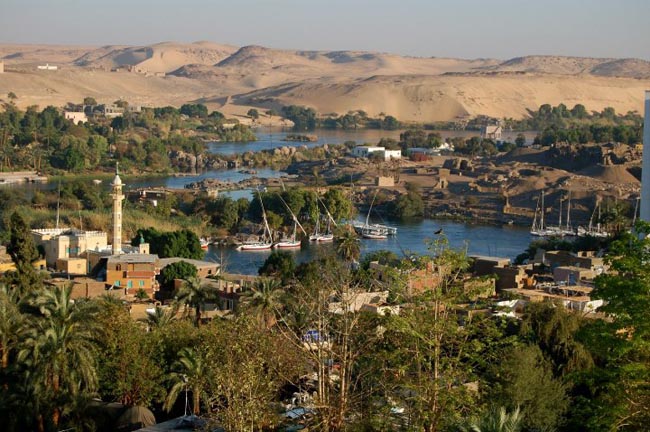


_modified.jpg)
